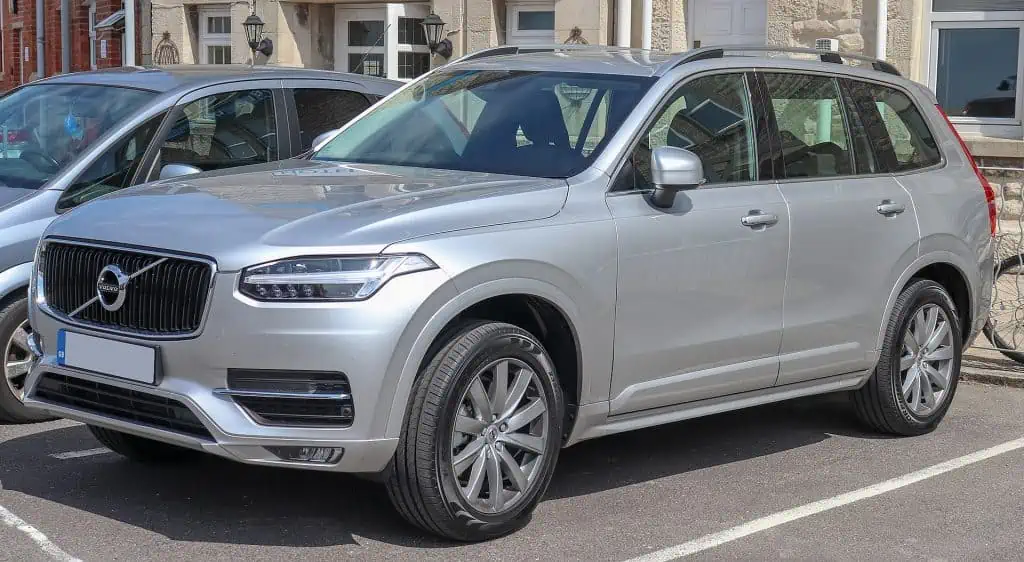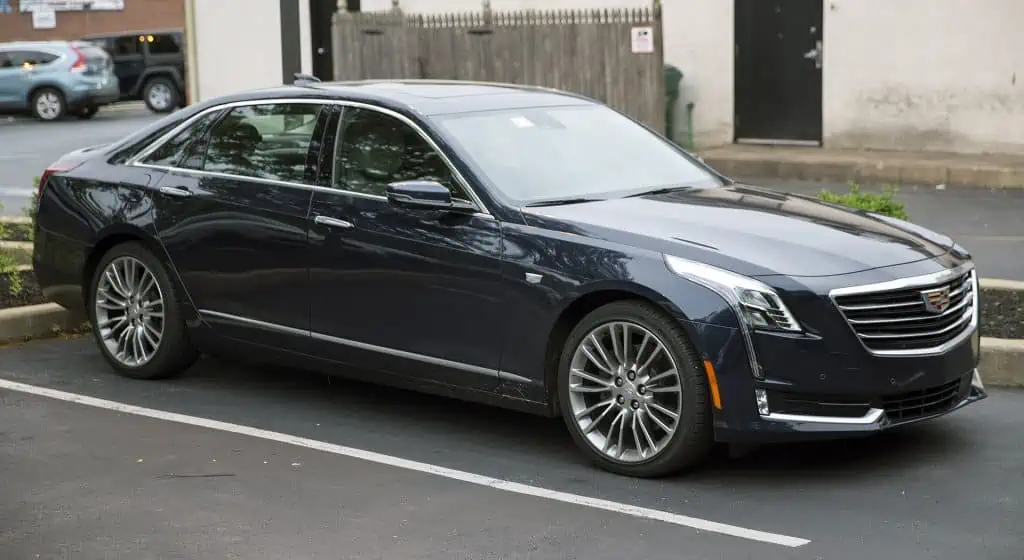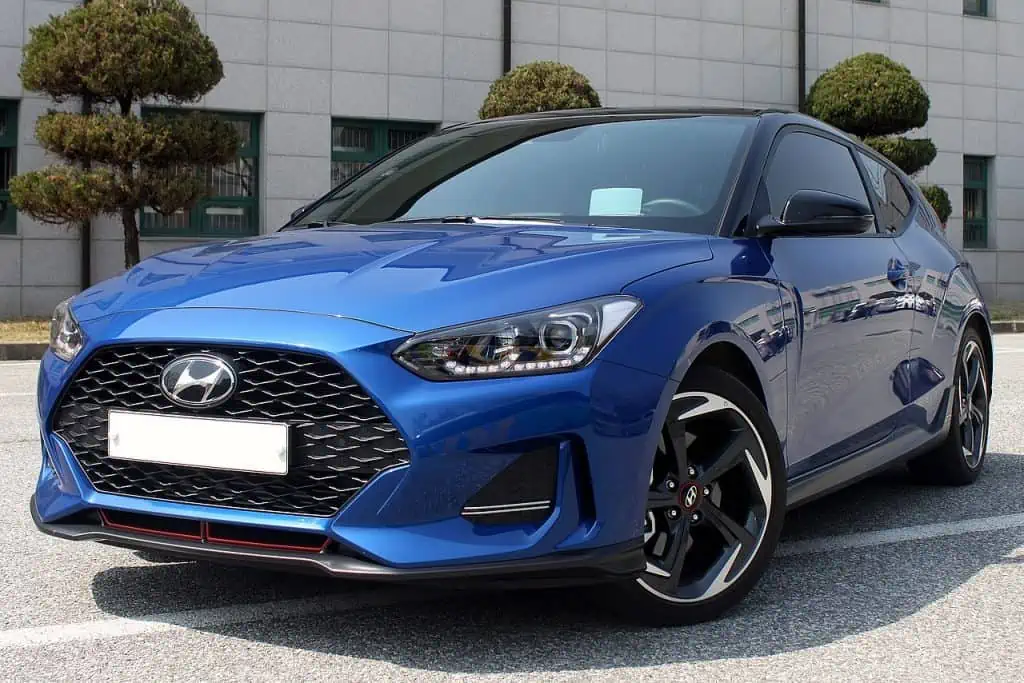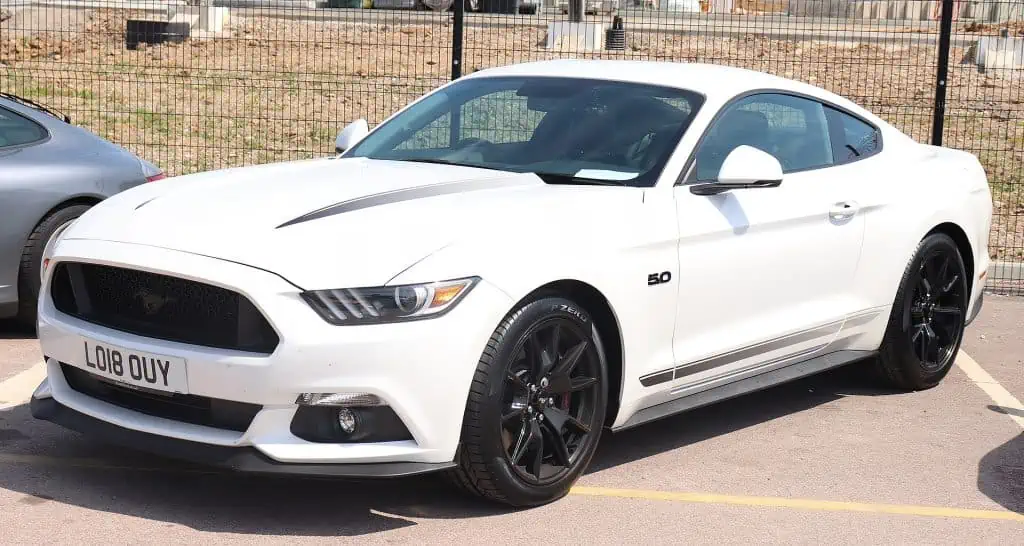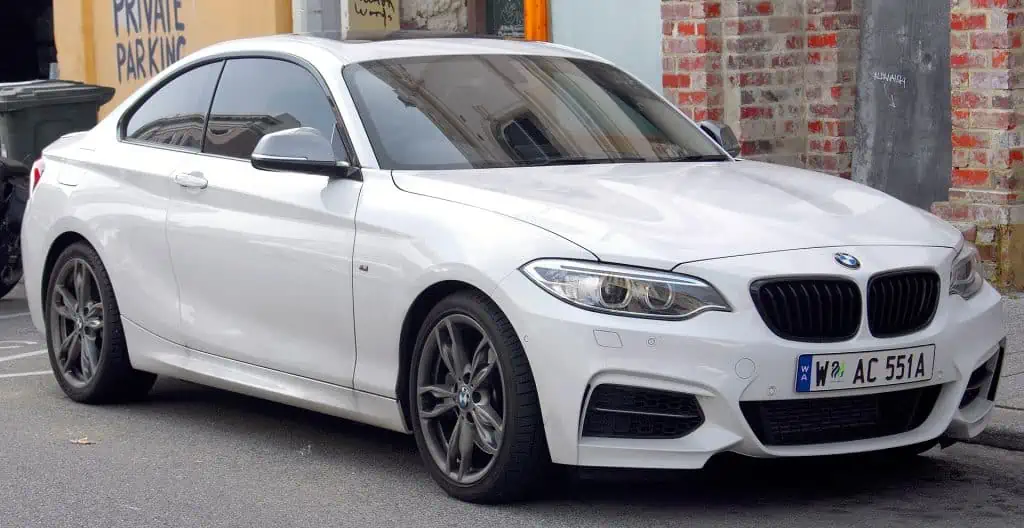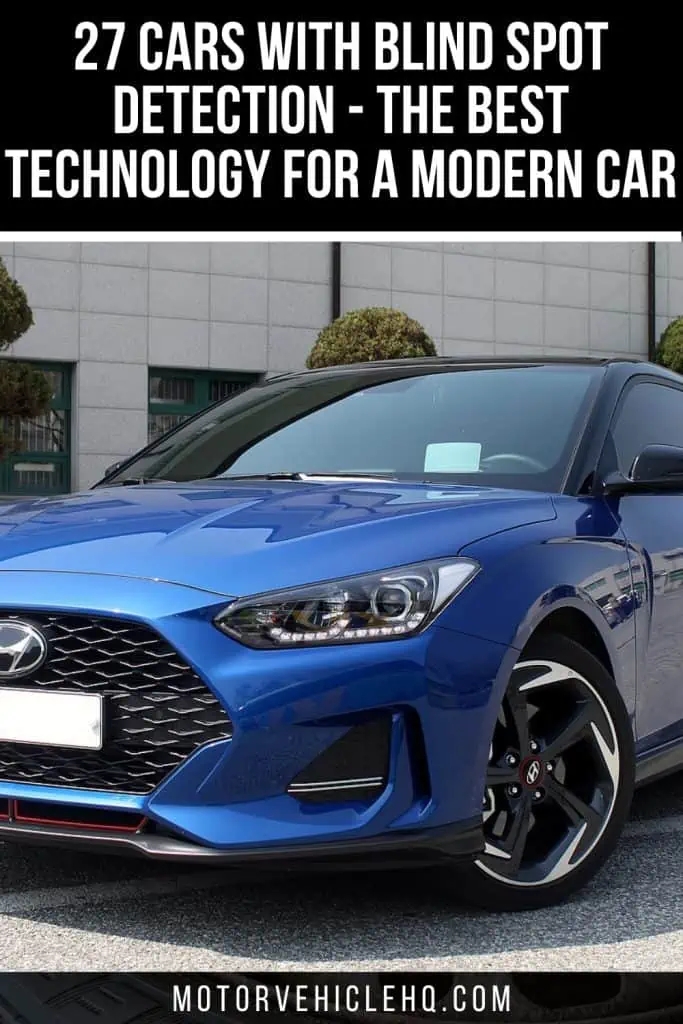As technological costs decrease, it is more and more common to see cars equipped with blind spot monitors. Automobiles with a blind spot monitor are now available at every price point, unlike when they were only found on expensive models.
To see what is in your blind spot, these systems use sensors. The system alerts the driver by turning on a light either in the side-view mirror or inside the vehicle close to the mirror when something is detected.
If you attempt to change lanes while someone is in your blind area and there is a chance of a collision, some systems will also sound a chime or even direct you back into your lane.
Blind spot camera systems exist as well, but they differ slightly in that they show a live feed of what is in your blind spot on the infotainment screen or the instrument cluster.
Simple requirements govern the cars on this list: A blind spot monitor is a feature that is available as either a standard or optional option on at least one trim level across the whole model lineup in every car.
We chose a variety of vehicles with blind spot monitoring systems because they are so readily accessible. Our list includes both affordable and upscale cars, as well as hybrids, compact sedans, and full-size sedans.
No of your needs or budget, this list of vehicles with blind spot monitors probably has something to suit you, so you’re prepared to visit the dealer.
2018 Volvo XC90 by Vauxford / CC BY-SA 4.0. Volvo has always placed a high focus on visibility. It should not be surprising that they were the first carmaker to provide a wide-angle side vision mirror in 1979 and that they were the first to offer an electronic blind spot monitoring system. Their 60- and 70-series vehicles first featured the Blind Spot Information System (BLIS) in 2005 as part of their ongoing efforts to improve the cause of automobile safety.
Blind Spot Detection Technology: What Is It?
Since so much technology is now included as standard equipment in cars, relying on it to keep us safe and aware of our surroundings at all times while driving has become second nature.
Driving has become more pleasant than ever thanks to additions like adaptive cruise control and high-quality 360-view cameras, and frequently, this technology is a major selling point for many consumers looking to buy their next new automobile.
Blindspot warning systems use cameras, sensors, and radars to identify cars in your blind spot and give you a visual alert in the outside mirrors or front pillars so you can avoid any potentially hazardous situations.
If your vehicle does not already have a blind-spot monitoring system, you can install one, but it is preferable to have a professional handle it. However, there are DIY kits available.
1. Volvo XC90 – 2017
Visibility has long been a priority for Volvo. It should come as no surprise that they were the first automaker to offer an electronic blind spot monitoring system as they were the first to launch a wide-angle side vision mirror in 1979.
As part of their continued effort to advance the cause of automobile safety, they debuted the Blind Spot Information System (BLIS) on their 60- and 70-series vehicles in 2005. BLIS is still an option on all Volvo vehicles today.
The next ambitious objective of the Swedish automaker is to completely eradicate fatalities and serious injuries in all of their new models by the year 2020.
Meanwhile, the XC90, a completely contemporary crossover that we adore driving, offers several of Volvo’s newest and best safety systems (as well as time-honored favorites like blind spot monitoring).
2. Mazda 3 – 2017
Blind-spot monitoring systems were also pioneered by Mazda, who now offers them as an option in all of their models, even the Mazda3, which is the least priced.
We’re glad to see that advanced safety features are making their way into more economical models as they frequently debut in higher-end vehicles.
We have always considered the Mazda3 to be one of the most enjoyable compact cars to drive. It is even more enticing because it boasts cutting-edge safety features like blind spot monitoring.
3. Cadillac CT6 – 2017
One of the issues with a blind-spot monitoring system is that it beeps to tell you when a vehicle is in your blind spot, which means that everyone in the vehicle is also alerted when it does so. That’s why we appreciate General Motors’ Safety Alert Seat, which debuted in high-end Cadillac vehicles.
A 2018 Cadillac CT6 by Mr.choppers / CC BY-SA 3.0. One drawback of a blind-spot monitoring system is that it beeps to inform you when a car is in your blind spot, which means that everyone in the car is also warned when this happens. We value General Motors’ Safety Alert Seat, which was introduced in high-end Cadillac vehicles, for this reason.
The device vibrates the seat cushion instead of beeping, vibrating on the left side for a car to your left and on the right side for a car to your right. No one in the automobile needs to know that you are dangerously close to changed lanes on a school bus since it is an excellent reminder, challenging for the driver to tune out, and very subtle.
The CT6 is one of our favorite Cadillac vehicles, and it comes with the Safety Alert Seat. It’s a large, opulent vehicle that matches Germans in terms of handling and attraction to drivers.
4. Chevrolet Equinox – 2018
The Safety Alert Seat was first offered by Chevrolet in their high-end models, as we indicated in the previous slide, but it is now being offered in more reasonably priced cars, like the brand-new 2018 Chevrolet Equinox. One of the many reasons we enjoy the new Equinox is its extensive list of optional safety measures.
If you choose to disregard the Safety Alert Seat, you have a second line of defense in the form of OnStar, a subscription-based system that immediately summons assistance in the event of a collision and dispatches help if the occupants are unable to respond.
5. Ford F-150 – 2017
The majority of blind spot monitoring systems cover the vehicle’s blind area, but what if you’re towing a trailer?
Even if you carefully examine your mirror, it can be difficult to determine the length of the trailer and what is or is not next to it. This is where the Ford F-150 pickup comes in. It includes a blind spot monitoring system that can detect bumper-tow trailers up to 30 feet long.
Put your trailer’s specifications into the F-150’s computer, and it will monitor and make adjustments for the extra length. The F-150 also includes an automated mechanism that makes backing your trailer simple. This is just one of its clever trailer tricks.
Ford’s F-250 and F-350 Super Duty pickups also have this technology if you’re towing a larger object, but regrettably, it is incompatible with the gooseneck and fifth-wheel trailers.
6. Honda Fit – 2017
Since the Honda Fit doesn’t have a blind-spot warning system, at least not in the conventional sense, we’ll refer to it as an honorable mention.
Instead, Honda installs its Lane Watch system in the Fit, which uses a tiny wide-angle camera located in the right-side mirror to capture images that are then displayed on the center screen.
The camera features parameters that indicate when a car next to you is clear of the rear bumper, providing a wider field of view than either the mirror or a peek over your shoulder.
Even if it just shields the passenger side, we still believe it’s a great concept. We anticipate that the entire industry will adopt backup cameras in the same way that Honda did with its LaneWatch camera.
A 2020 Honda Fit by M 93 / CC BY-SA 3.0 de. We will regard the Honda Fit as an honorable mention as it does not, at least not in the traditional sense, have a blind-spot warning system. As an alternative, Honda equips the Fit with its Lane Watch system, which makes use of a tiny wide-angle camera housed in the right-side mirror to take pictures that are subsequently shown on the center screen.
7. Hyundai Ioniq – 2017
Good safety technology should be affordable, so we’re happy that Hyundai’s new Ioniq, a green vehicle that comes in hybrid, all-electric, and (soon) plug-in hybrid varieties, offer blind spot monitoring as an optional feature.
The Ioniq is the vehicle the market has been waiting for: a hybrid with excellent real-world fuel efficiency and a competitive price.
While reducing amenities to keep a car’s pricing down is necessary, we appreciate that Hyundai has given the Ioniq the option of a blind-spot monitoring system.
8. Jeep Renegade – 2017
Over the past twelve years, we’ve enjoyed watching blind spot monitoring transition from a specialist feature accessible on a few high-end vehicles to a more ubiquitous option (and, on more and more cars, part of the standard equipment list.)
Although blind spot monitoring isn’t standard on all models of the popular and reasonably priced Jeep Renegade, it is available as a (relatively) inexpensive option on all save the base model.
We enjoy the Jeep Renegade for its independent spirit and capable off-road prowess, and we’re glad that a wide range of safety equipment can be ordered with it.
9. Mercedes-Benz E-Class – 2017
The majority of the blind spot monitoring devices we’ve talked about will vibrate or make a sound to alert the driver to a car in their blind area.
In addition, Mercedes’ Active Blind Area Assist uses the brakes on the other side of the vehicle to direct the car back into your lane if it begins to drift toward a car in your blind spot.
It’s simple for a driver to override the system with corrective steering because it uses the brakes rather than the steering (although we don’t see why you’d purposely want to steer into a car that’s in your blind zone).
The E-Class, which is among the most elegant luxury sedans on the market in our opinion, as well as several other Mercedes-Benz automobiles that are desirable, are equipped with Active Blind Spot Assist.
10. Fiat 124 Spyder – 2017
The Fiat 124 Spyder, one of our favorite two-seat convertibles, can also be ordered with a blind spot monitoring system, so don’t think that blind spot monitoring is just available for big cars with big blind spots.
Although the Fiat 124 Spyder has a practically infinite outward view with the top down, it can be simple to overlook automobiles that are parked just off your quarter panel when the top is up.
A second set of eyes, even if they are electronic, can never hurt when they are watching the road beside you.
A Fiat 124 Spyder by Charles01 / CC BY-SA 4.0. Don’t assume that blind spot monitoring is just available for large vehicles with large blind spots because the Fiat 124 Spyder, one of our favorite two-seat convertibles, can also be bought with a system. The Fiat 124 Spyder has a nearly limitless field of vision when the top is down, but when it’s up it can be easy to miss cars parked right off your quarter panel.
11. Toyota Corolla – 2022
In addition to having blind-spot monitoring technology, the new 2022 Toyota Corolla has a 7-inch infotainment system that is 2.4 times faster than their present systems.
It includes real-time traffic updates, parking information, speed camera data for the area, and voice control. Both Apple CarPlay and Android Auto are supported by the device.
With its pre-collision systems, lane departure alarms, automatic high beams, lane tracing, and road sign assistance, Toyota Safety Sense 2.0 is incredibly popular.
The advancements in safety technology are astounding, and the 2.0 update includes some of the most cutting-edge equipment available.
12. Kia Forte GT-Line – 2020
Along with innovative safety features like the Kia Forte’s Blind Spot Collision Warning system, the 2020 Kia Forte provides a ton of options. A 2.0-liter or 1.6-liter turbo I-4 engine is available.
When combined with the standard CVT, the first one achieves a great 31/41 mpg rating. If you like, you may also have a 6-speed manual or a 7-speed automatic.
13. Subaru Impreza Premium/Premium 5-Door – 2020
The 2020 Subaru Impreza is already a very good car thanks to Subaru’s top-notch safety suite, Subaru Eyesight; adding Blind Spot Detection makes it even better. In addition to being safe, the Impreza has standard AWD and gets high gas mileage.
14. Mazda 6 Sport – 2020
The Mazda6 2020 is a stylish, quick automobile. The Mazda6 is the solution if you want a standard mid-size sedan that doesn’t drive like one.
Conveniently, even the base trim offers the Blind Spot Monitor technology, which is still uncommon. This makes the car a contender when combined with its top IIHS and NHTSA ratings.
15. Volkswagen Jetta SE – 2020
The Jetta has a trim level slightly above the base trim level that includes a blind spot monitor. Additionally, you’ll discover some entertaining add-ons there, such as a panoramic sunroof, habanero orange paint, and Volkswagen’s special ski bag—for your skis, of course.
16. Hyundai Veloster Premium – 2020
The Hyundai Veloster offers a nimble ride, as you might have inferred from the name. There are several different speeds to choose from.
And even before you start adding amenities, the Veloster I was is already a top safety pick. The wonderful thing about the Premium trim is that most safety technology is offered as standard equipment, so you won’t be nickel and dimed when you add extras.
Hyundai Veloster Premium by Ki hoon / CC BY-SA 4.0. As you might have guessed from the name, the Hyundai Veloster provides a responsive ride. There are various speeds available for selection. The Veloster I is already a high safety selection, even before you start adding amenities. The most amazing feature of the Premium trim is that the majority of safety technology is included as standard equipment, so you won’t be nickel and dimed when you buy extras.
17. Kia Soul A – 2020
For a good reason, Kia’s king of boxy vehicles and crossovers is at the top of the list. It’s a fantastic option because of the interior quality, drivability, and feature set that is offered.
It’s also great that essential safety features like the blind spot monitor are available in lower grades. Only one step separates the S from the base model. Therefore, purchasing a new Soul with this function won’t break the bank.
18. Prius – Toyota
A well-known hybrid vehicle with a hatchback that increases its capacity for hauling baggage, particularly bulkier items that could not fit in a trunk, is the Toyota Prius. Except for the base L Eco trim level, it comes standard with a blind spot monitor and rear cross-traffic warning.
19. Sentra – Nissan
The Nissan Sentra is one of the more economical options for getting standard blind spot monitoring, with a starting price of roughly $20,000.
This cutting-edge driver aid is one of six driver aids that are included as standard on Sentra as part of Nissan Safety Shield 360.
In addition to the required blind spot monitor, you also get automatic high beams, rear automatic braking, rear cross-traffic alert, and automatic emergency braking with pedestrian detection.
20. Accord – Honda
A full-size automobile with both gas and hybrid engines is the Honda Accord. The majority of the lineup, including its hybrid versions, is equipped with blind spot monitoring and cross-traffic warning.
All gas-powered Accords have this function, except for the LX, Sport (excluding 2.0T), and Sport Special Edition trims.
If you want an Accord hybrid with this function, you have lots of options because it comes standard on everything but the lowest Hybrid grade.
21. Elantra – Hyundai
The cheap Hyundai Elantra is a compact vehicle with standard Blind-Spot Collision-Avoidance Assist on all trim levels.
This technology is designed to go farther to assure your safety than simply alerting you when anything is in your blind spot: It can apply the left or right front brake before you change lanes as an added safety precaution if you turn on your turn signal when it detects something in your blind spot.
22. Mustang – Ford
There are several different trim levels for the Ford Mustang, a sports automobile. They range from more understated to powerful high-performance solutions for individuals who intend to spend a lot of time on the racetrack.
To make the most of the pleasant summer days, you can choose between a hardtop coupe and a soft-top convertible. Whichever you decide on will come with Ford CoPilot 360 as a standard feature.
Blind spot monitoring and rear cross-traffic alert are included in this group of safety features as standard.
A 2018 Ford Mustang GT by Vauxford / CC BY-SA 4.0. The Ford Mustang is a sports car that comes in a variety of trim levels. For those who plan to spend a lot of time racing, they range from subtler options to potent high-performance ones. You have the option of a soft-top convertible or a hard-top coupe to make the most of the wonderful summer days.
23. Malibu – Chevrolet
There are four different trim levels for the capacious mid-size automobile Chevrolet Malibu. All include blind spot monitoring as an available* feature, except for the base L trim.
24. Stinger – Kia
A sporty sedan with standard Blind-Spot Collision-Avoidance Assist is the Kia Stinger. When it detects a vehicle in the driver’s blind area, the automobile can apply the brakes if the driver attempts to turn into another lane as well as warn them if anything is in their blind zone.
The top GT2 trim also has a Blind Area View Monitor, which displays a live video feed of the driver’s blind spot anytime the turn signal is turned on.
25. The Audi A3
The Audi A3 is a sleek exterior-styled luxury sports car that comes in three well-equipped trim levels. On the Premium level, it has Audi Side Assist with Rear Cross Traffic Assist as part of the Convenience Package.
Both the Premium Plus and the Prestige will come with this as standard equipment.
26. A-Class Mercedes-Benz
A-Class is a high-end car with a luxurious interior. It combines premium components with a potent, captivating drive and agile handling. Additionally, it offers a basic Blind Spot Assist.
At speeds exceeding 20 mph, the technology alerts the driver of a vehicle in the blind area by displaying a red icon in the side view mirror. Additionally, the system includes a warning sound if the turn signal is turned on when a car is detected in the blind zone.
27. The BMW 2 Series
The BMW 2 Series is a luxury sports coupe with a variety of potent engines available that are made to appeal to car enthusiasts. The 2 Series comes equipped with BMW Active Driving Assistant as standard safety.
Frontal collision warning, lane departure warning, speed limit information, and active blind spot identification are all included in this safety package. There is no need to upgrade your trim level or add a package because it is a basic feature of the 2 Series.
Blind spot monitoring systems are widely available on today’s vehicles, so it’s simple to select one that meets your requirements and your budget.
Blind Spot Detection Installation
The mirrors in your car are a crucial safety element that is intended to help you drive and keep you and those around you safer on the roads.
Due to the abundance of technological features now found in modern vehicles, many drivers find blind spot detection to be an intriguing feature.
An enticing upgrade for older automobiles is to install blind spot detection, which can provide a much-needed safety improvement.
It not only speeds up your reaction time by physically alerting you when a car is close by, but it can also help drivers of larger vehicles keep an eye on everything around their truck that they might not be able to see in their mirrors.
A BMW 2 Series by EurovisionNim / CC BY-SA 4.0. The BMW 2 Series is a high-end sports coupe with a range of powerful engines designed to appeal to motorsports fans. BMW Active Driving Assistant is a standard safety feature on the 2 Series. This safety package includes active blind spot recognition, lane departure warning, frontal collision warning, and speed limit information.
The two types of aftermarket BSM systems available are an indicator and sensor kits, which both serve as your blind spot’s eyes and alert you to any nearby vehicles.
A range of sensor technologies, including radar and sonar, are used to perceive the area around your automobile through cameras installed in the side mirrors. When you are moving at a specific pace, the sensor will turn on an indicator once something comes into view.
The best systems currently on the market project a bean that, when it lands on the surface of another vehicle, bounces back and alerts you to impending danger.
The Conclusion
As technological costs decrease, it is more and more usual to see cars equipped with blind spot monitors. Automobiles with a blind spot monitor are now available at every price point, unlike when they were only found on expensive models.
To see what is in your blind spot, these systems use sensors. The system alerts the driver by turning on a light either in the side-view mirror or inside the vehicle close to the mirror when something is detected.
If you attempt to change lanes while someone is in your blind area and there is a chance of a collision, some systems will also sound a chime or even direct you back into your lane.
Blind spot camera systems exist as well, but they differ slightly in that they show a live feed of what is in your blind spot on the infotainment screen or the instrument cluster.
Simple requirements govern the cars on this list: A blind spot monitor is a feature that is available as either a standard or optional option on at least one trim level across the whole model lineup in every car.
We chose a variety of vehicles with blind spot monitoring systems because they are so readily accessible. Our list includes both affordable and upscale cars, as well as hybrids, compact sedans, and full-size sedans.
No matter your needs or budget, this list of vehicles with blind spot monitors probably has something to suit you, so you’re prepared to visit the dealer.
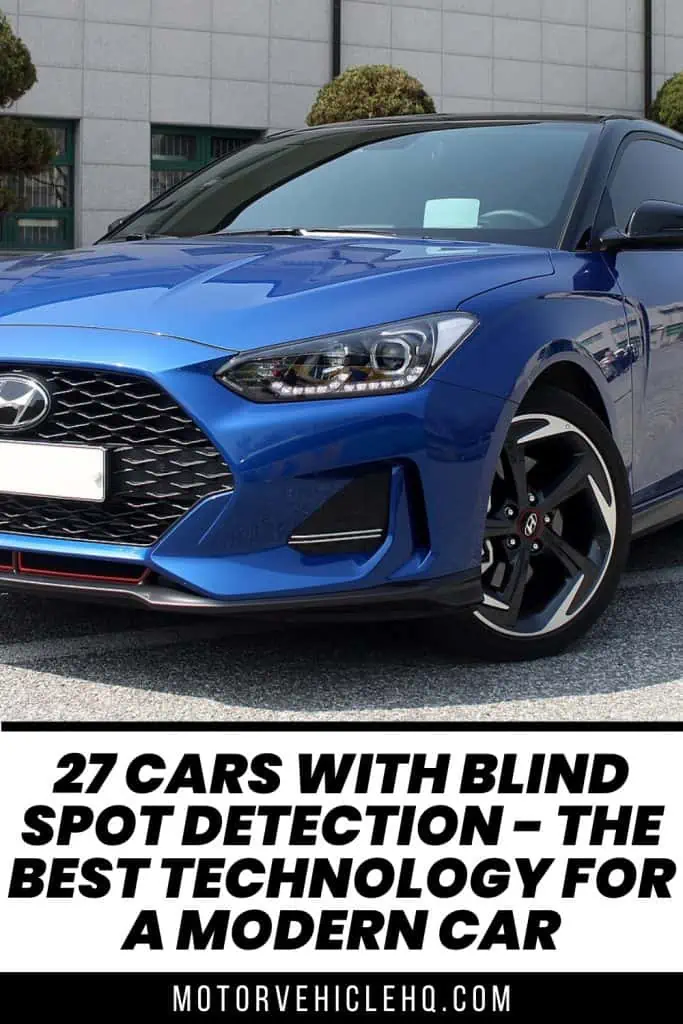
Hyundai Veloster Premium by Ki hoon / CC BY-SA 4.0

Jim Wicks is the founder of MotorVehicleHQ. With over two decades of experience in the automotive industry and a degree in Automotive Technology, Jim is a certified car expert who has worked in various roles ranging from a mechanic, car dealership manager, to a racing car driver. He has owned more than 20 cars over the past 15 years. Ask him about any vehicle you see on the road and he can tell you the make, model and year. He loves the aesthetics of all things cars, and keeps his vehicles in pristine condition.
In his free time, Jim enjoys getting his hands dirty under the hood of a classic car or taking long drives along the country roads. His favorite car? A 1967 Shelby GT500, a true classic that, according to Jim, “represents the pure essence of American muscle.”
